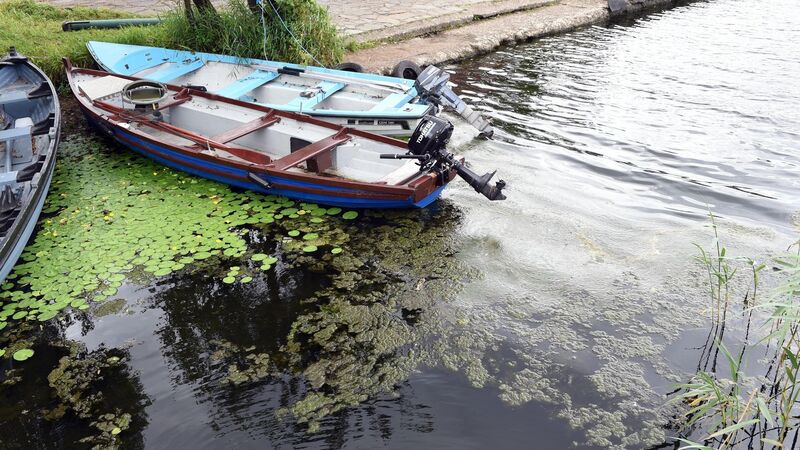Nearly half of Irish lakes and rivers not of good standard — and the issue is getting worse

An algae bloom (green scum) visible on the shoreline of Lough Leane near Ross Castle, Killarney on Tuesday. File picture: Don MacMonagle
Nearly a half of Irish surface water — such as that in lakes, rivers, wetlands and streams — was not considered to be of high or good biological quality in 2019, a major environmental report has found.
The Environmental Protection Agency (EPA) report on water quality also found that more than a third of rivers, and a quarter of lakes, are failing to meet their environmental quality standards for nutrients — with human activity the main culprit.
Munster and the south east are particularly vulnerable, according to the EPA.
The main threat to water quality is the presence of too many nutrients, such as phosphorus and nitrogen, which come primarily from agriculture and waste water, the EPA said.
The trends are going in the wrong direction, the agency added.
Just over half of rivers and lakes are in high or good biological quality, but on a positive note, the rivers surveyed in 2019 have shown more improvements than declines overall.
While a welcome finding, further action is needed to return waters to a satisfactory condition, the EPA said.
EPA director, Dr Micheál Lehane, said: "Clean, healthy water is essential for our economy, our aquatic wildlife and for our health and well-being.
"However, this assessment shows that our water environment remains under considerable pressure from human activities.
"Of most concern is the continued upward trend of nitrate concentrations.
"The problem is particularly evident in the south and southeast of the country where the main source is agriculture.
Nitrate is a nutrient that is essential for plant growth, but too much in a body of water can lead to the overgrowth of plants and algae.
They then outcompete and displace other flora and fauna, and can also cause oxygen depletion, which will damage the overall ecology of the bodies of water.
Irish estuaries and coastal waters are particularly sensitive to high nitrogen concentrations, the EPA said.
The main source of excess nitrate in the environment is agriculture, with waste water also contributing.
Nitrate concentrations above the drinking water standard can pose a risk to human health, particularly for young children, the agency warned.
Like nitrogen, too much phosphorus in a water body can lead to the overgrowth which disturb the ecosystem.
Excess phosphorus is a particular concern for the ecological health of rivers and lakes, the EPA said.
EPA programme manager Mary Gurrie said the time was nigh for urgent measures to combat the growing problems, particularly within agriculture.
“Elevated nutrient concentrations are contributing to pollution in our freshwaters and estuaries and causing difficulties with drinking water standards in some areas," said Ms Gurrie.
"There is a lot of good work happening at a local level to improve water quality and this needs to be scaled up to deliver the improvements needed," Ms Gurrie said.










